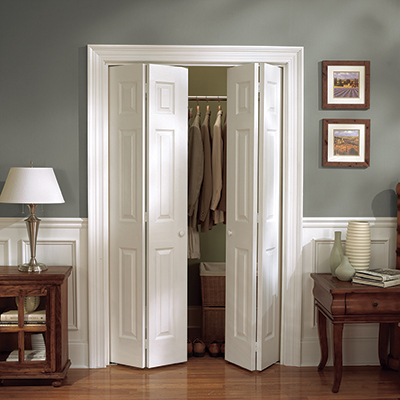How to Fix an Interior Door

Last updated September 7, 2023
If your interior door is sticking, jammed or doesn’t close properly, you can fix it. Sometimes a door will open but scrape along the bottom. There are a lot of reasons you may need to fix your interior door. Hinges can become loose or seasonal humidity can cause warping. Older homes can shift and cause a door frame to move or a door to come off its track. The key to fixing a sticking door is to determine the cause. Use this guide to figure out why your door isn’t working properly, different ways to fix your door and more.
Difficulty:
Beginner
Duration:
Under 2 hours
Table of Contents
Identify the Problem
Tighten Hinge Screws
Replace Hinge Screws or Hinge
Adjust Strike Plate
Adjust Hinge Pin
Correct Door Level
Identify the Problem
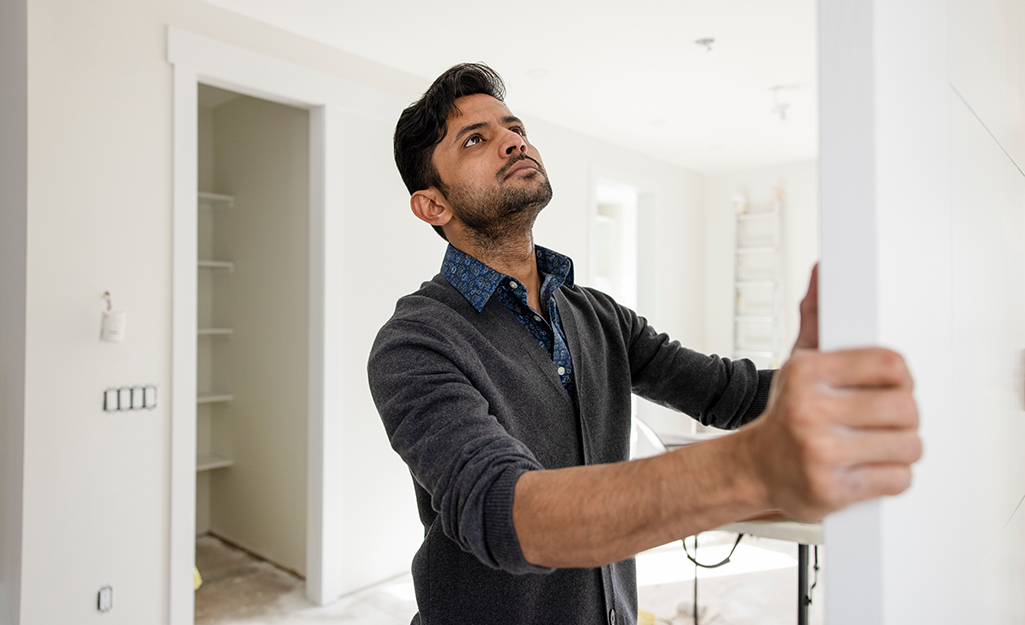
There are several reasons why your interior door isn’t opening or shutting well. The first step in knowing how to fix an interior door is to examine it. Make sure you have plenty of light. If possible, open the door. Look closely at the top, sides, bottom and top of the door. Note if there is any build-up of dust or dirt on the parts or edges of the door.
See if the hinges are broken or the screws loose. Listen for any squeaking. Look for problems with the strike plate or door frame. Close the door. See if there are gaps or uneven spaces around where the door meets the frame. If the door sticks, open and close the door to determine where the sticking is happening. If the door is difficult to open, note where it seems the most stuck. Slide a piece of paper around the top, bottom and sides of the door. Wherever the paper doesn’t slide smoothly is a problem area.
Once you’ve identified where the problems is, follow the steps below to fix your interior door.
Tip: If any of the sticking is caused by dirt or grime, simply clean the area with a warm water and degreaser or dish soap.
Tighten Hinge Screws

Many problems with opening or closing an interior door can be traced to the hinges. Overtime, hinges can become loose. All the hinges may not be loose. Tighten one at a time until you’ve solved the problem. Here are some common hinge solutions:
If your door is scraping the floor or stuck at the top, tighten the screws in the top or bottom hinge. This should bring your door level and make it hang properly in its frame. If the door is bumping against its frame, the hinge screws connecting the door and frame may be loose. Start by tightening these. If this does not fix the problem, tighten the screws connecting the hinges to the door. Squeaky hinges can also cause a door to get stuck. Apply a lubricant to the squeaky hinge or hinges. Lay a drop cloth or rag under your door to catch any drips.
Tip: Don’t overtighten screws. They can strip, break or even damage the wood.
Replace Hinge Screws or Hinge
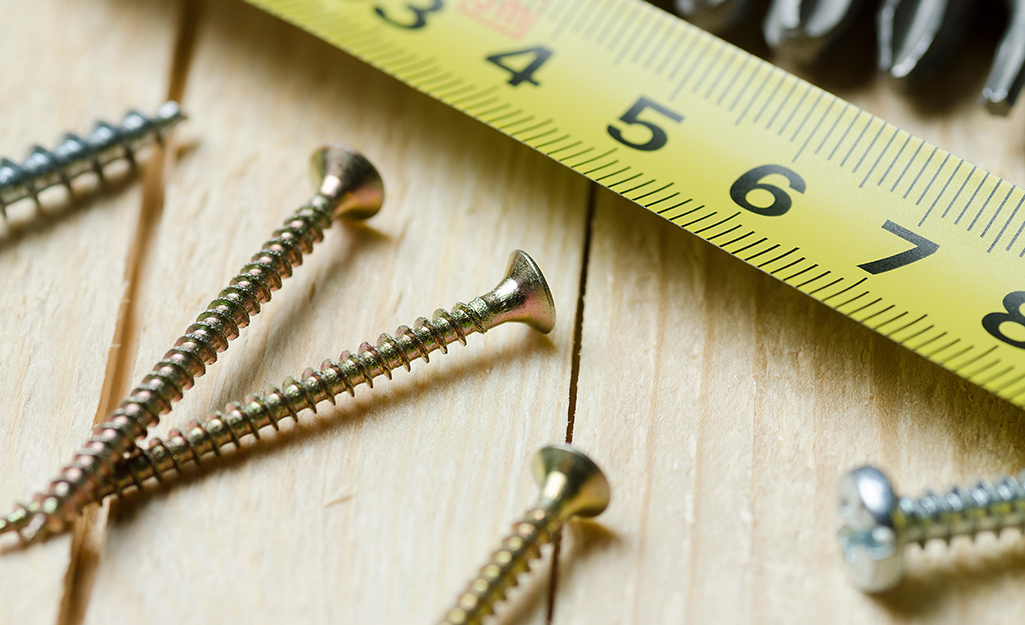
If the solutions in Step 2 do not fix your interior door, you may need to change the screws, hinge or hinge pin.
- Replace stripped hinge screws with longer 3-inch wood screws. Sometimes you only need to replace the middle screws to bring the door back into alignment.
Replace bent or damaged hinges. Unscrew the hinge from the door.
- For a bent hinge, use pliers to remove the hinge pin (the long rod inside the barrel). Gently straighten and bend the hinge leaves until they lay flat. Insert the pin back into the hinge and screw it back on the door.
- For a new hinge, simply remove the old hinge and screw a new one on the door. Make sure it is the same type and size hinge of the other ones.
Adjust Strike Plate
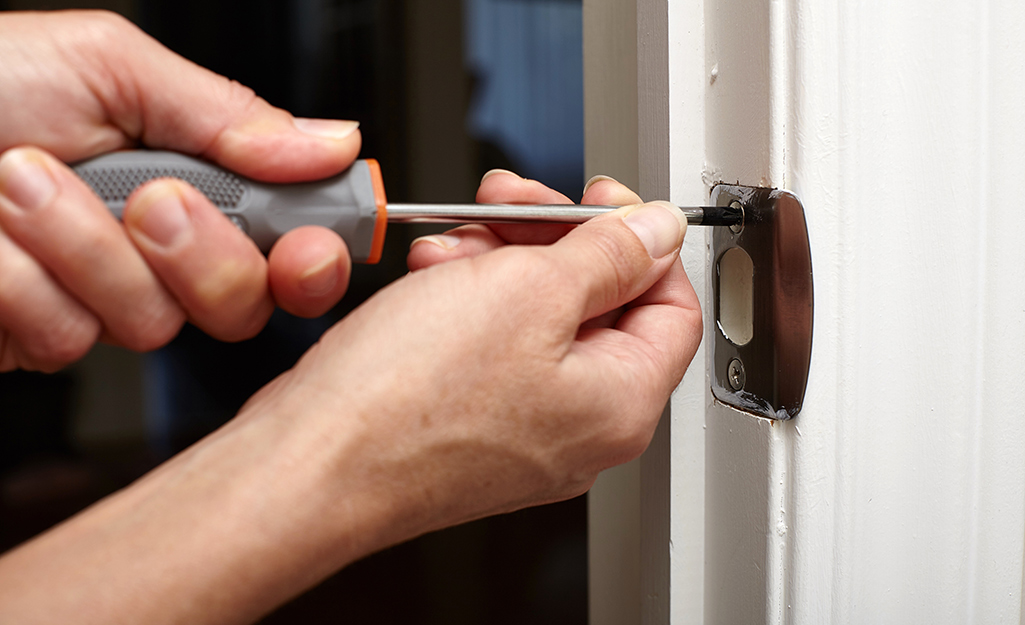
A door is constantly in motion. This friction can lead to its strike plate becoming loose. A loose or crooked strike plate can cause a door to scuff along the bottom. Locate the four screws and tighten them clockwise. Tighten one screw at a time and check the door after each. This should stop the door from dragging.
Adjust Hinge Pin
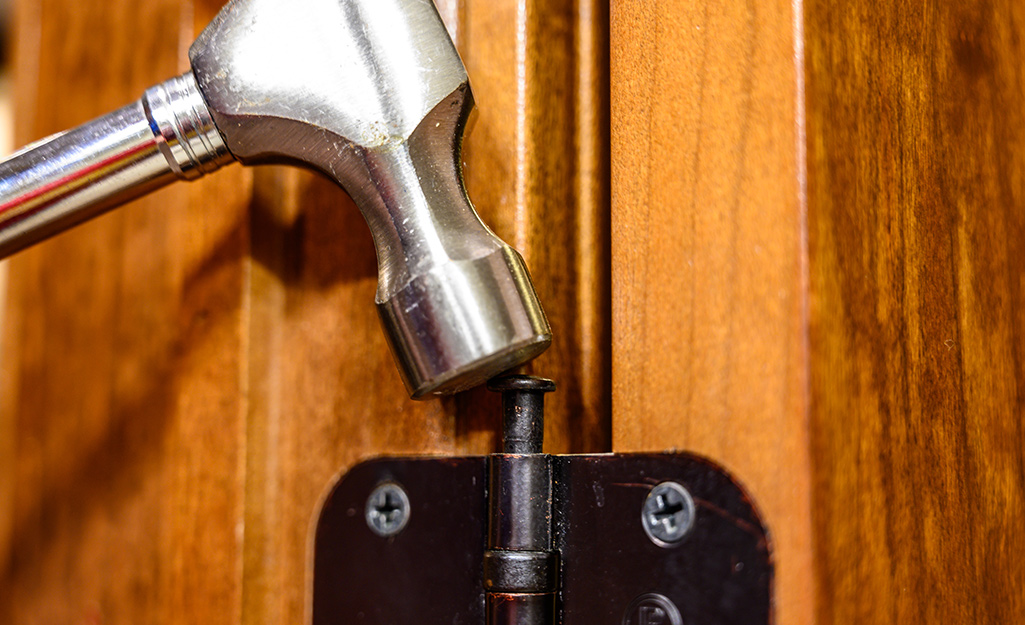
Often a door can shift or settle over time, causing a door to warp or rub against its frame. This can sometimes be fixed by aligning the door using its hinge pin.
- Use pliers to remove the pin in the hinge at the door’s top.
- Put thin strips of scrap wood under the hinge side of the door until the door is straight.
- Gently tap the pin in to hold the door in place.
- Remove the shims from beneath the door.
Correct Door Level
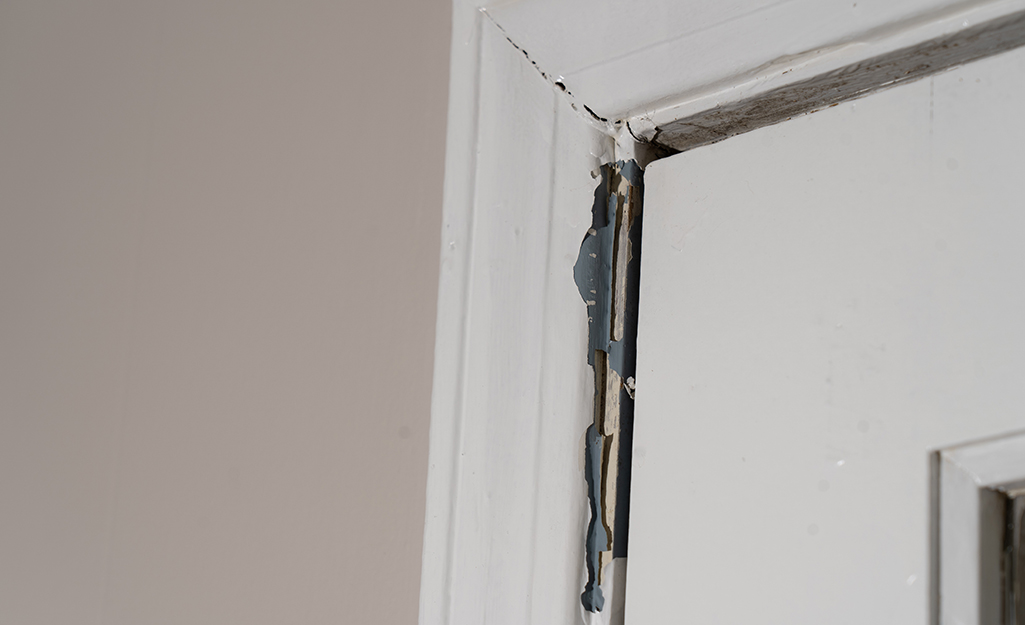
If you’ve got an interior that’s crooked, it may be the shims. Shims are the wood pieces that go between the door frame to keep a door centered and level. If there’s too few or too many shims, the door won’t hang straight. Here’s how to fix the problem:
- Remove the trim by carefully cutting the caulk line with a utility knife. Pry the old trim off with a
- small pry bar.
- Cut though any of the screws or nails that attach your door frame to the wall with a reciprocating saw.
- Check if the door is level. Adjust the shims until it is.
- Nail the shims in place. Drive new screws in and shim the striker side. Make sure space is even from top to bottom. Screw and secure door in place.
- Reinstall trim. Putty and paint any screw holes.
Repair Bifold Door Tracks
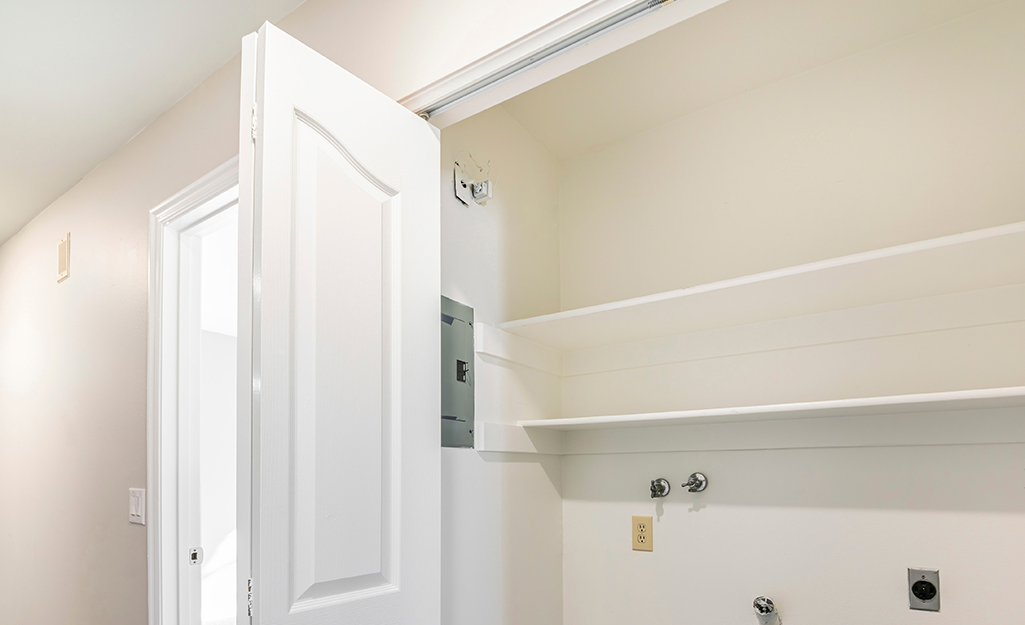
A bi-fold or accordion door has a track that guides it and keeps it operating smoothly. A common problem with accordion or bi-fold doors is they jump their track. This is often caused by a damaged guide wheel or track.
Start by gathering your tools. You’ll need a replacement guide wheel, a bifold door repair bracket and a power drill.
- Pop the door completely out.
- Sometimes the guide wheel is broken and the hole it’s mounted in is damaged. Take the new bracket and set it in place. Screw it down with the hardware included in the kit.
- Pop the new guide wheel into place. Slide the wheel back and forth to make sure it moves freely.
- Hang the door back on its tracks.
Trim Door
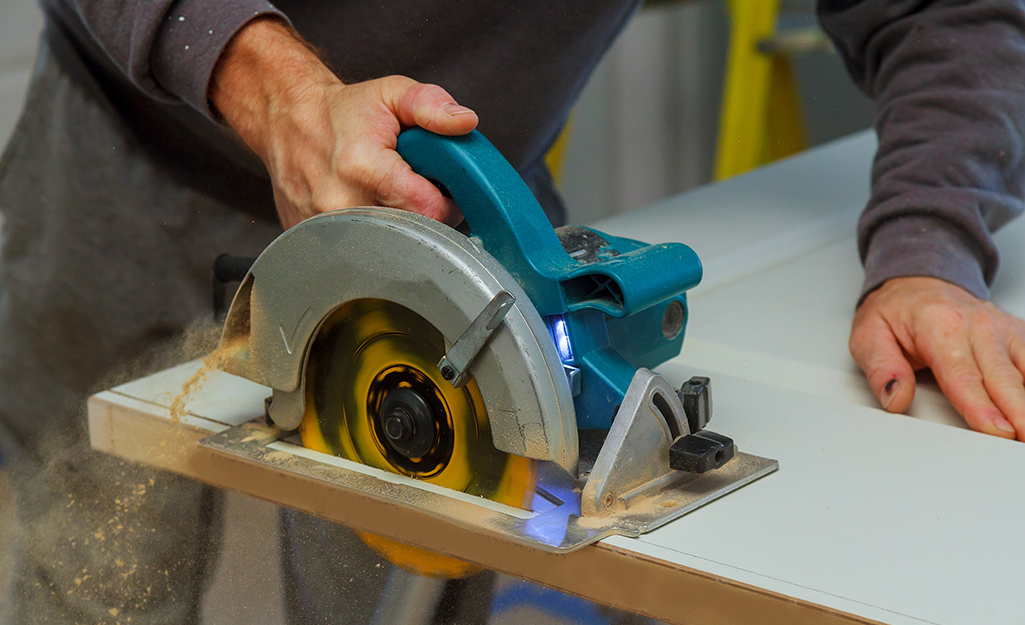
A door or door frame can warp or swell over time. If none of the above solutions work to fix a broken interior door, you may need to trim it.
- While the door is hanging, draw a level line across the bottom of the door. This line should eliminate the part of the door is sticking but keep as much of the bottom of the door as possible.
- Measure twice so you don’t over trim the door.
- Remove the door from its hinges.
- Depending on how much excess wood you need to trim, use a sander or a saw.
Fixing Seasonal Door Problems

Changes in temperature or humidity can affect how interior doors perform. Wood doors or wood door frames can shift and change depending on the humidity level in your home.
If a door to sticks or jams in one season but not another, try these temporary fixes:
- Use a dehumidifier to remove moisture in the air. Place it next to the sticking door. You can also run your air conditioner to decrease humidity levels.
- Rub the area where the door sticks with bar soap or dust it lightly with powder or cornstarch so it can move more freely.
Fixing an interior door that doesn’t work properly. Start by finding out what makes it stick. It can be anything from a squeaky hinge to a warped bottom. With a few tools and a little observation, you can repair most interior door problems in no time. Ready to get tools, materials or a new door? Use The Home Depot Mobile App to locate products and check inventory. We'll take you to the exact aisle and bay.


